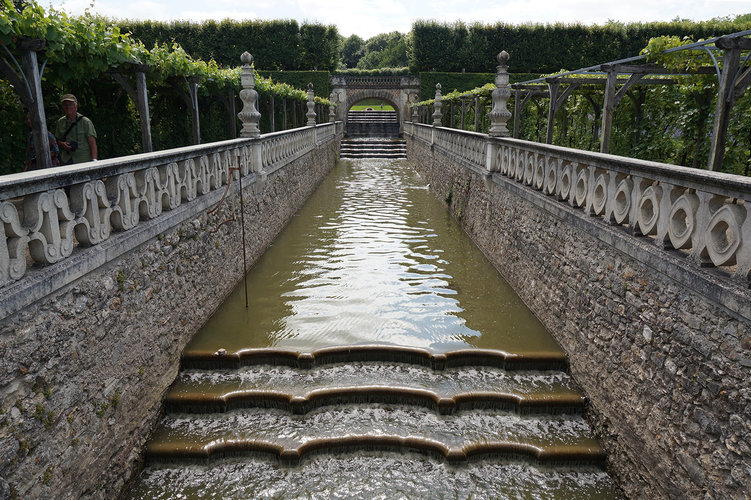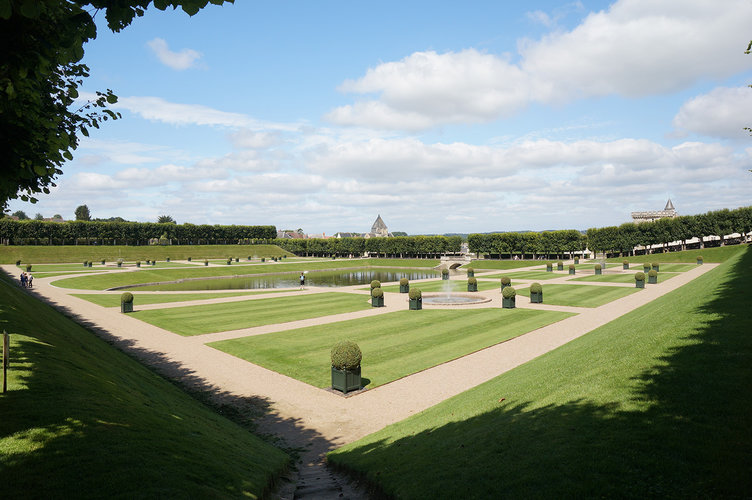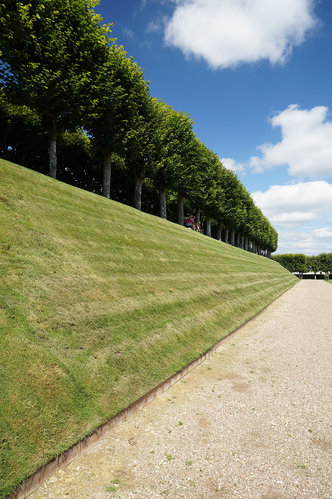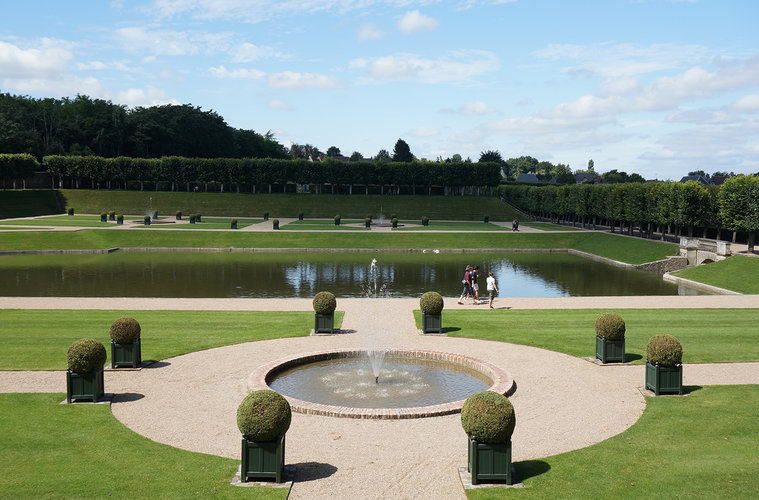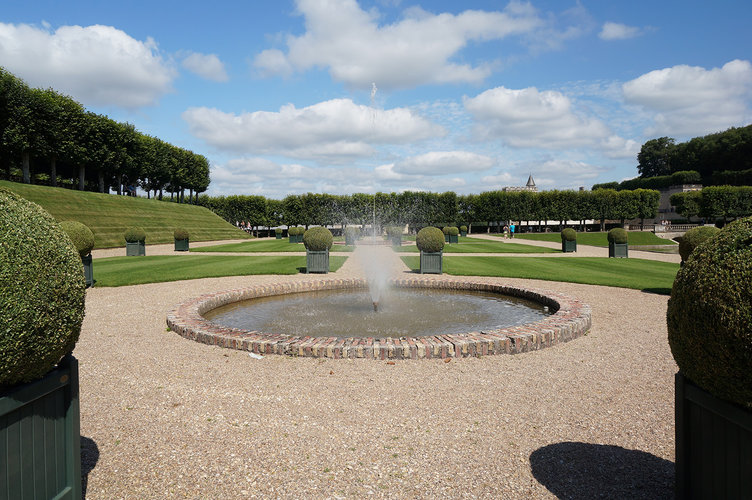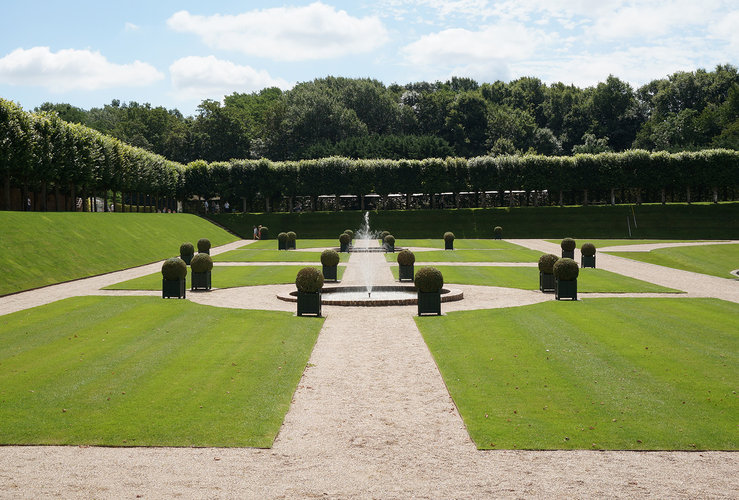
The gardens of Chateau du Villandry are enormous, elaborate and extensively documented. The Potager (Vegetable Garden) is a mecca for garden tourists—of which I am one, let’s face it, with my camera perpetually attached to my chest like a third arm. I was warned by others who have gone before me that I would be disappointed, but it was more of a sense of adequately fulfilled expectation—no more, no less. Except, that is, for the Water Garden.
I am not normally a proponent of water features beyond the functional swimming pool. They are typically contrived and ill-conceived, inserted haphazardly into landscapes to invoke a false sense of calm, interest or relationship to nature. (Fake ponds and waterfalls being the worst offenders.) They are expensive to construct and difficult to maintain and are often left to become putrid mosquito-breeding grounds. But the Water Garden at Villandry challenged my deeply-held, long-standing bias—not to the point of total conversion, but certainly to respectful exception.
As the source of the moat surrounding the Chateau and reservoir of irrigation for its gardens, the large central reflecting pool takes advantage of its functions with its form—sort of a square with an arced cap. Four circular fountains are symmetrically and geometrically arranged on either side of the pool. Panels of grass divided by gravel paths are punctuated by perfectly round boxwood in square planters. The entire picture is framed by perilously steep lawn plinths, topped with pleached lindens. The repetition of simple forms—squares and circles—and minimal palette of materials is intensely graphic and remarkably modern. With only a few deliberate strokes, this garden makes a dramatic statement that demands respect of even the most doubtful.
